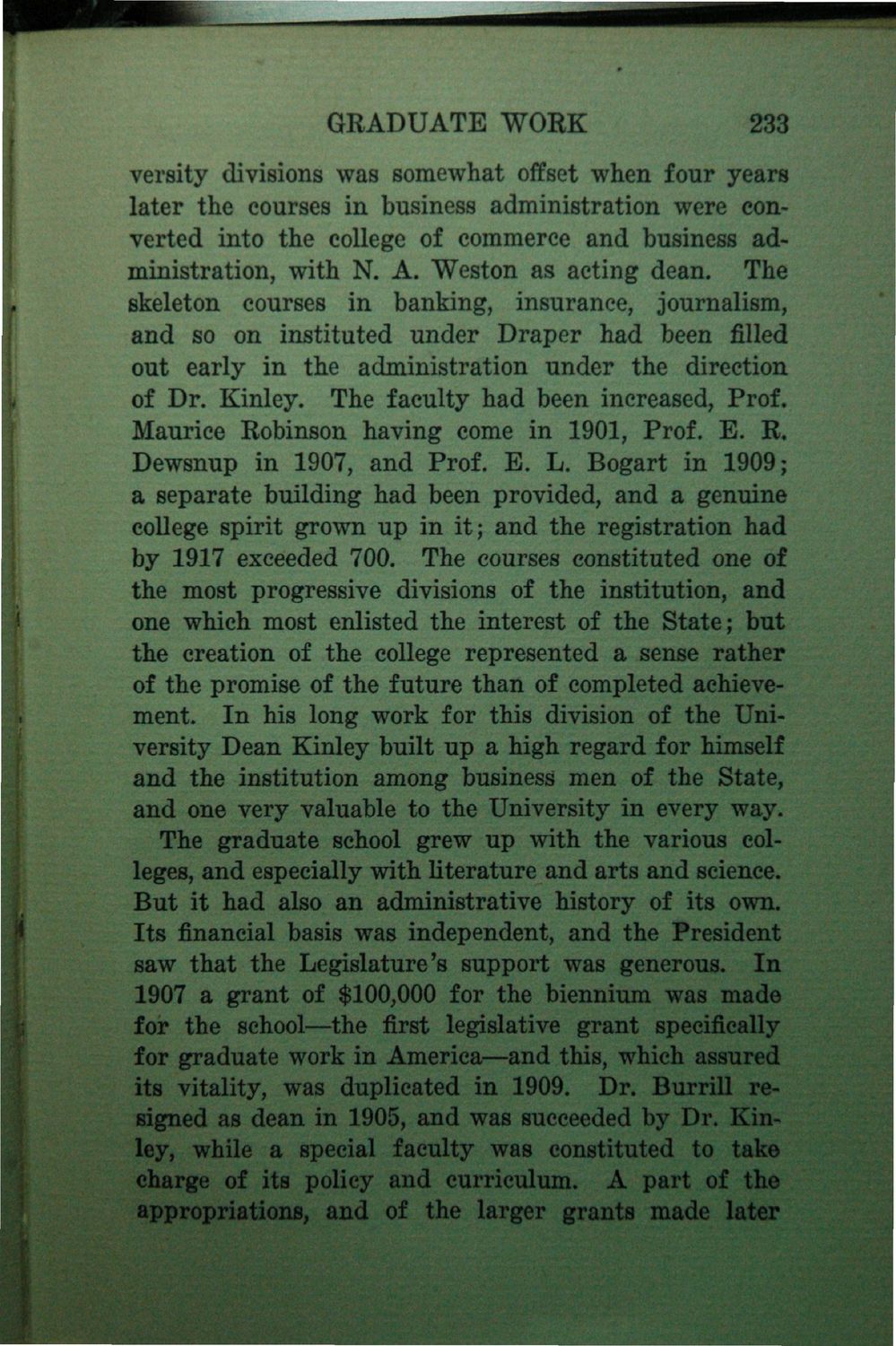| |
| |
Caption: Book - History of the University (Nevins)
This is a reduced-resolution page image for fast online browsing.

EXTRACTED TEXT FROM PAGE:
GRADUATE WORK 233 versity divisions was somewhat offset when four years later the courses in business administration were converted into the college of commerce and business administration, with N. A. Weston as acting dean. The skeleton courses in banking, insurance, journalism, and so on instituted under Draper had been filled out early in the administration under the direction of Dr. Kinley. The faculty had been increased, Prof. Maurice Robinson having come in 1901, Prof. E. R, Dewsnup in 1907, and Prof. E. L. Bogart in 1909; a separate building had been provided, and a genuine college spirit grown up in it; and the registration had by 1917 exceeded 700. The courses constituted one of the most progressive divisions of the institution, and one which most enlisted the interest of the State; but the creation of the college represented a sense rather of the promise of the future than of completed achievement. In his long work for this division of the University Dean Kinley built up a high regard for himself and the institution among business men of the State, and one very valuable to the University in every way. The graduate school grew up with the various colleges, and especially with literature and arts and science. But it had also an administrative history of its own. Its financial basis was independent, and the President saw that the Legislature's support was generous. In 1907 a grant of $100,000 for the biennium was made for the school—the first legislative grant specifically for graduate work in America—and this, which assured its vitality, was duplicated in 1909. Dr. Burrill resigned as dean in 1905, and was succeeded by Dr. Kinley, while a special faculty was constituted to take charge of its policy and curriculum. A part of the appropriations, and of the larger grants made later
| |